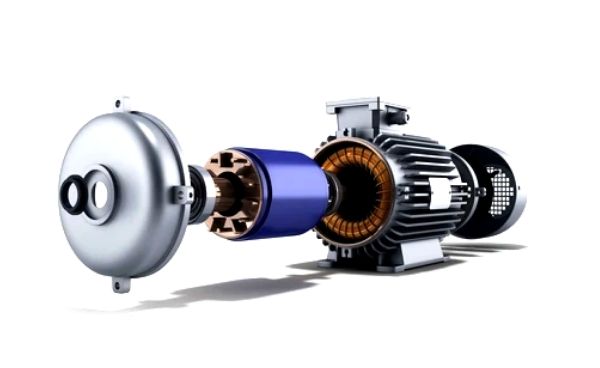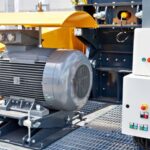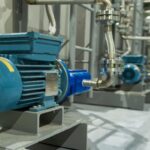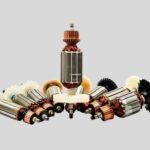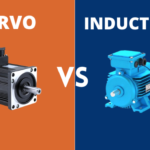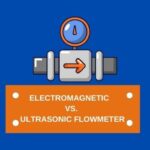Choosing the Right Magnet for Your Electric Motor Application
Choosing the Right Magnet for Your Electric Motor Application has major implications on design, project costs, and overall performance. It’s important to make an informed decision in this step of the process. But where do you start? How do you know what type of magnet to use?
Before you make any decisions, it’s important to first understand the qualities that differentiate magnets and their potential applications for various motor.
Key Magnet Qualities to Consider for Electric Motor design
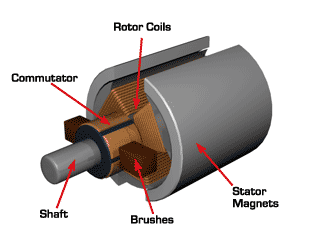
1) Remanence (Br)
Remanence Br is a measurement for the magnetic induction or magnetic flux density that remains in the magnet after successful magnetisation.
Simply said: the higher this value is, the “stronger” the magnet.
2) Energy Product
The maximum amount of magnetic energy that can be delivered at peak performance.
The maximum energy product is a measurement for the maximum amount of magnetic energy stored in a magnet. The unit of measurement is kJ/m³ (Kilojoule per cubic meter) or MGOe (Mega-Gauss-Oersted).
Simply put, the maximum energy product is an indicator of magnet strength. You can either use a small magnet with a higher energy product or a large magnet with a lower energy product for the same application.
3) Intrinsic Coercivity (Hc)
Coercive field strength Hc describes the force that is necessary to completely demagnetise a magnet.
Simply said: the higher this number is, the better a magnet retains its magnetism when exposed to an opposing magnetic field.
4) Curie Temperature
In physics and materials science, the Curie temperature, or Curie point, is the temperature above which certain materials lose their permanent magnetic properties.
Curie point—about 570 °C (1,060 °F) for the common magnetic mineral magnetite.
Types of magnets used in BLDC/ PMSM motors
1) Ferrite Or Ceramic magnet
It is the most common magnet used in most types of DC electric motors.
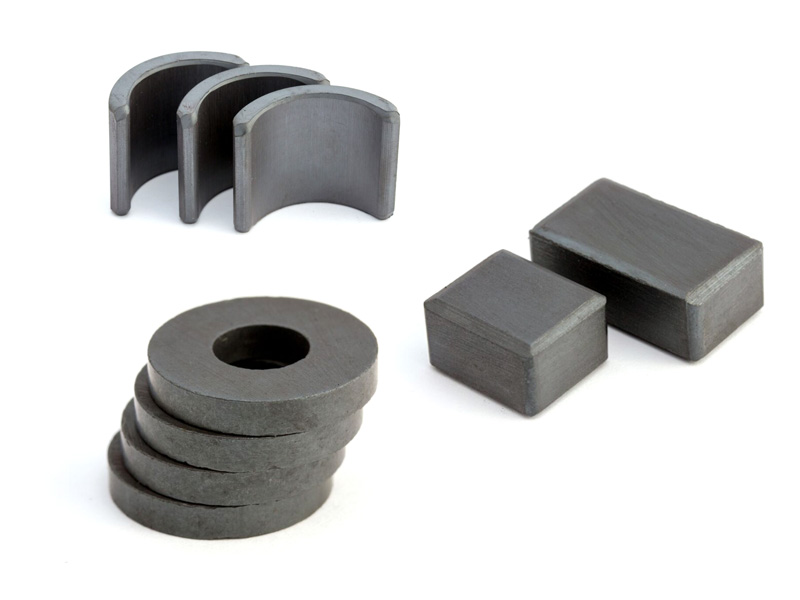
Features include
Although they offer low energy compared to rare earth magnets, ferrite magnets have won wide acceptance due to their strong resistance to demagnetization, exceptional corrosion resistance, and low price.
Ferrite magnets have low intrinsic coercivity levels. Basically, they are cheap and stable. However, ferrite magnets have the lowest remanence and energy product levels.
In order to produce high levels of torque, these magnets have to be large. Your entire motor design will have to accommodate this size and weight.
Operating temperature
Maximum operating temperature for a ceramic magnet is 250°C.
Although you will experience magnetic losses when operating at elevated temperatures, the losses are recovered when the material is brought down to normal ambient temperature. However, operating in very cold temperatures (-20°C) can result in permanent losses of magnetic strength unless the circuit has been designed for such extremes.
Corrosion Protection
ferrite or Ceramic magnets offer good corrosion resistance and generally do not require a coating or plating.
2) Aluminum Nickel Cobalt (AlNiCo5)
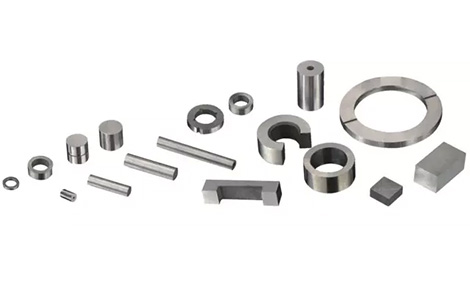
AlNiCo magnets can withstand temperatures of a maximum of 500 to 550 ° C without losing their magnetic properties.
Features include
They are stronger than Ferrite magnets, but remanence and energy product values are still low, requiring size and weight alterations in the motor.
The AlNiCo5 magnet is very hard and brittle, which makes processing difficult. In addition, the magnet has a weak coercive force, which makes it sensitive to opposing magnetic fields. In contrast, however, it has a high remanence value.
Corrosion Protection
They provide high corrosion resistance.
Aluminum Nickel Cobalt (AlNiCo5) Magnet Application
They are ideal for sensors, magnetic switches, motors, measuring devices, etc. In addition, the magnets are also suitable for home and school use. In school, children can be introduced to the exciting field of magnetism in a playful way.
AlNiCo5 magnets offer the lowest intrinsic coercivity levels and are best for high temperature applications.
3) Neodymium Magnet
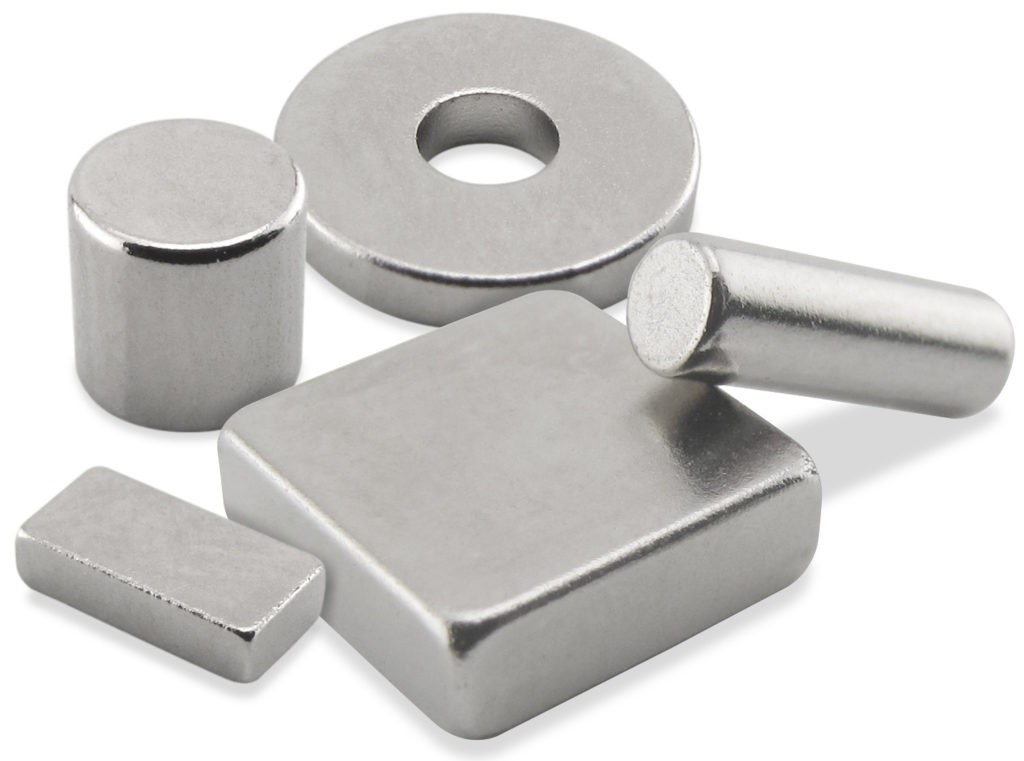
Neodymium is a rare-earth element, so these magnets are expensive and become unstable at high temperatures. However, they have high remanence and energy product levels. Neodymium magnets produce strong magnetic fields in a small package.
Neodymium magnets entered the marketplace in the 1980s and were always strong – more than 10x stronger than ceramic magnets – but the first neodymium magnets for sale were very expensive. However, improvements in manufacturing processes and other factors have now also made them affordable for everyday use.
Neodymium Magnet Features
This magnets are widely used for motor, sensor and holding applications.
- This Is powerful commercially produced magnets.
- Neo magnets are hard and brittle and may chip or break if dropped.
- Neodymium disc magnets are magnetized through the thickness.
- Uncoated NdFeB magnets may corrode in humid conditions.
- Operating temperatures vary among material grades. For a comparison of neodymium material grades, please see our chart of material properties.
- Neodymium magnets are often assembled into products using strong adhesives such as Loctite 325. Make sure that all contact surfaces are clean and dry prior to bonding. You may also be interested in our neodymium magnets with adhesive.
- Please use caution when handling magnetized neodymium magnets, their exceptional magnetic force may cause them to attract to metal (or to each other) so strongly that fingers in their path could prove painful.
Corrosion Protection
While today’s Neo magnets are more temperature and corrosion-resistant, a protective coating is still necessary for certain applications.
Applications
Neodymium magnets have replaced Alnico and ferrite magnets in many applications where strong permanent magnets are required because their greater strength allows the use of smaller, lighter magnets. These applications include:
- package closures
- displays and signs
- head actuators for computer hard disks
- magnetic resonance imaging (MRI)
- magnetic guitar pickups
- loudspeakers and headphones
- magnetic bearings and couplings
- permanent magnet motors
- cordless tools
- servo motors
- lifting and compressor motors
- synchronous motors
- spindle and stepper motors
- electrical power steering
- drive motors for hybrid and electric vehicles
- actuators
4) Samarium Cobalt Magnet
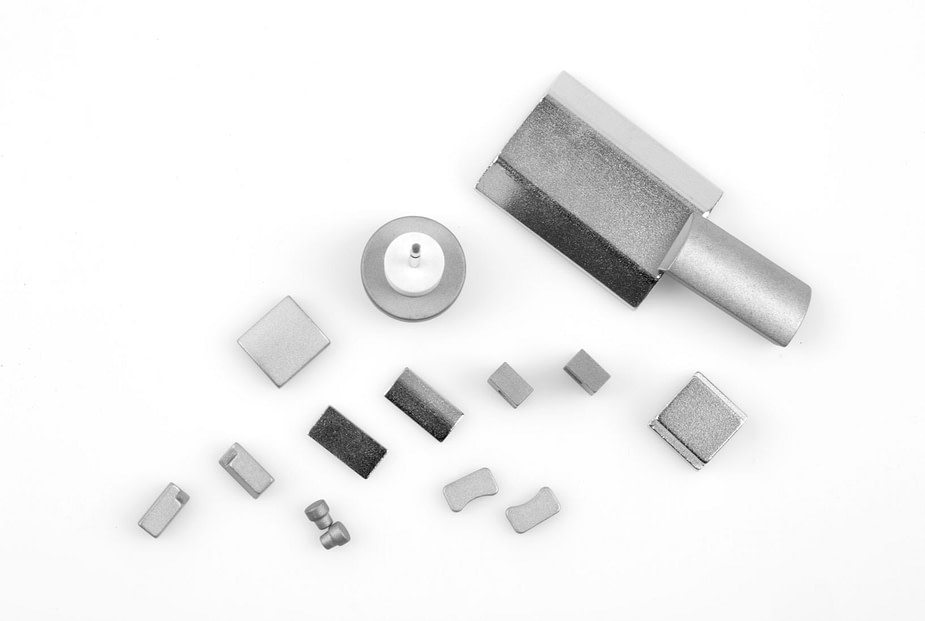
Samarium is also a rare-earth element. These magnets will be the most expensive. But, they have the highest remanence and energy product levels, and they’re stable at high temperatures. Samarium magnets are used in small, powerful motors that operate in high temperatures.
Understanding the properties of these materials is crucial. Once you align the needs of your project with the qualities of these magnets, you’ll be able to choose the right magnet for your motor.
Samarium Cobalt Magnet Features
Samarium Cobalt (SmCo) disc magnets are powerful magnets rare earth magnets composed of samarium and cobalt. They are commonly used in high-performance motors, magnetic couplings, and magnetic separators. These are brittle magnets and are prone to cracking and chipping. Samarium magnets can be used for high-temperature applications where neodymium will not work.
- Samarium cobalt magnets are hard and brittle and may chip or break if dropped.
- They have high magnetic properties
- offer good thermal stability
- Samarium cobalt magnets are resistant to corrosion
- Samarium cobalt magnets resistant to demagnetization
Temperature Considerations
A Samarium Cobalt magnet can withstand higher temperatures than a Neodymium magnet.
The maximum operating temperatures for Samarium Cobalt magnets are between 250 and 550 °C; Curie temperatures range from 700 to 800 °C.
Additionally, a Samarium Cobalt magnet is less subject to corrosion than a Neodymium magnet, and usually does not require coating or plating.
To know more visit : Adams Magnetic products

